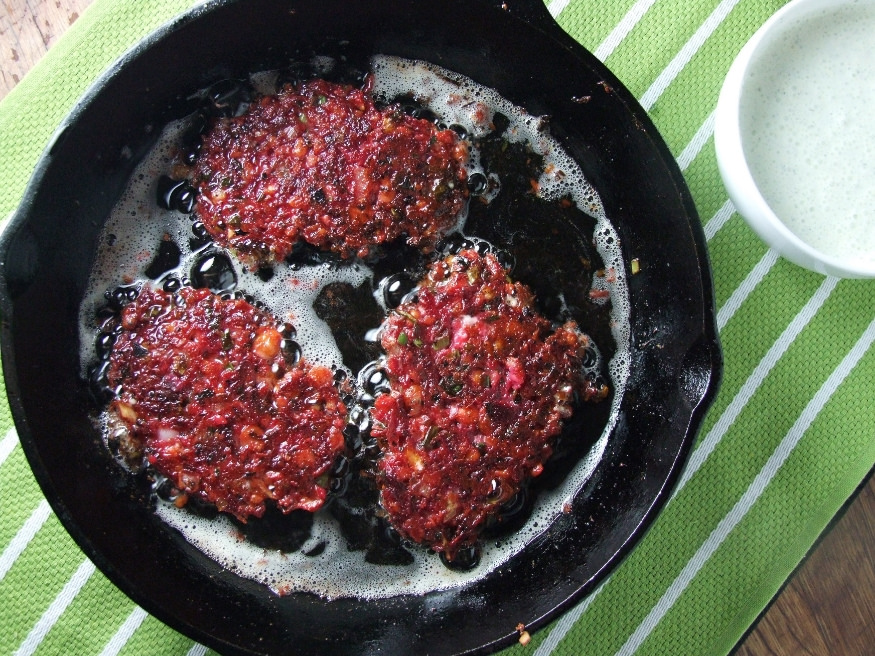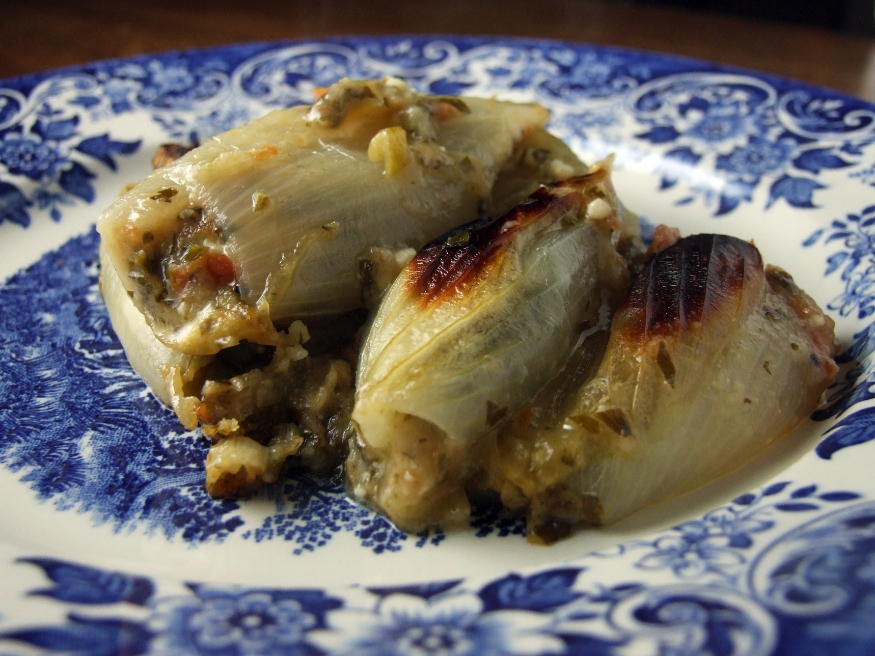
I really do love a good fritter. Salt fish fritters for when I’m feeling very ‘Peckham’ or juicy corn fritters at the end of summer when there’s so much corn going cheap I can’t fry fast enough. Recently, I’ve been grating all those stubborn winter root vegetables into submission.
First to get the treatment were the beets; grated into the mix with whole chickpeas and sharp feta cheese, sizzled and drizzled with minty yoghurt.
The carrots got shredded in with plenty of fresh coriander leaves and spring onions, fried till orange-gold and served with a ginger-infused sauce. You can’t really go wrong with fritters; as long as the mixture isn’t too sloppy and your oil is hot you’re set for crisp and crunchy dinner satisfaction. A few singed edges here and there on your first batch won’t matter either.
Frittering root veg seems to bring out their sweetness, which is why the slightly sour yoghurt works so well as an accompaniment. I prefer the creamy full-fat Greek-style version but if you want to use regular or even (shudder) low-fat then cut back on the citrus juice, it will be too astringent otherwise. Seriously though, you’ve just fried vegetables in oil, enjoy them properly.
Carrot and Coriander Fritters with Gingery Yoghurt
(serves 4 as a starter)
500g carrots, grated
4 spring onions, finely chopped
2 cloves garlic, crushed
1 heaped teaspoon cumin seeds, toasted
Handful coriander leaves, chopped
3 tablespoons flour
2 eggs, beaten
Salt and pepper
Oil, for frying
For the yoghurt
250g thick natural yoghurt
Squeeze of lime juice
1 inch piece ginger
Once the carrots are grated, squeeze them to extract as much juice as possible. Mix with the rest of the fritter ingredients. Squeeze some of the mixture together in your hands to make sure it won’t fall apart when cooking. If you think it will, add either some more beaten egg or flour, but just a little.
Cook the fritters in batches: heat a 1cm depth of oil in a heavy-based frying pan. When hot, drop spoonfuls of the batter into it, immediately pressing flat with a spatula. It’s important not to crowd the pan; you’ll probably cook 3 at a time. Cook for 3-4 minutes each side or until golden. Don’t be tempted to turn the fritters before they have formed a good crust underneath, or they will break. Remove to a plate covered with kitchen paper to drain with excess oil then keep warm in a very low oven while you cook the remaining fritters.
Mix the yoghurt and lime juice in a bowl. Cut the ginger into small pieces and squeeze through a garlic crusher – all the juice should come out in the bowl and any ginger root should be finely crushed. Serve dolloped on top of the hot fritters.
Beetroot, Chickpea and Feta fritters with Minty Yoghurt
(serves 4 as a starter)
350g cooked beetroot (if cooking yourself, simmer whole then rub the skins away afterwards)
200g cooked chickpeas
100g feta cheese, crumbled
2 tablespoons parsley leaves, finely chopped
4 spring onions, finely chopped
Zest of ½ lemon
½ teaspoon ground cumin
1 egg, beaten
3 tablespoons flour (plain white flour or chickpea flour)
Salt and pepper
Groundnut or vegetable oil, for frying
For the sauce
250g tub thick natural yoghurt
Handful mint leaves
Juice of 1/2 lemon
Salt and pepper
To make the sauce, put the yoghurt, mint and lemon juice in a blender and whizz until thoroughly mixed. Taste and season with salt and pepper
To make the fritters, grate the beetroot into a large bowl then transfer to a sieve and press down to squeeze out as much of the juice as you can. Transfer back to the bowl and mix in all the other fritter ingredients. Season with salt and pepper but be sparing with the salt as the feta is salty. Squeeze some of the mixture together in your hands to make sure it won’t fall apart when cooking. If you think it will, add either some more beaten egg or flour, but just a little.
Heat a 1cm depth of oil in a heavy based frying pan. Drop spoons of the batter into the hot oil, immediately spreading out to a flat fritter shape (the fritters need to be the same thickness all over).
It’s important not to crowd the pan; you’ll probably cook 3 at a time. Cook for 3-4 minutes each side then set aside to drain on kitchen paper. Don’t be tempted to turn the fritters before they have formed a good crust underneath, or they will break. The fritters can be kept warm in a very low oven while you cook the next batch.
Serve at once with the sauce.


